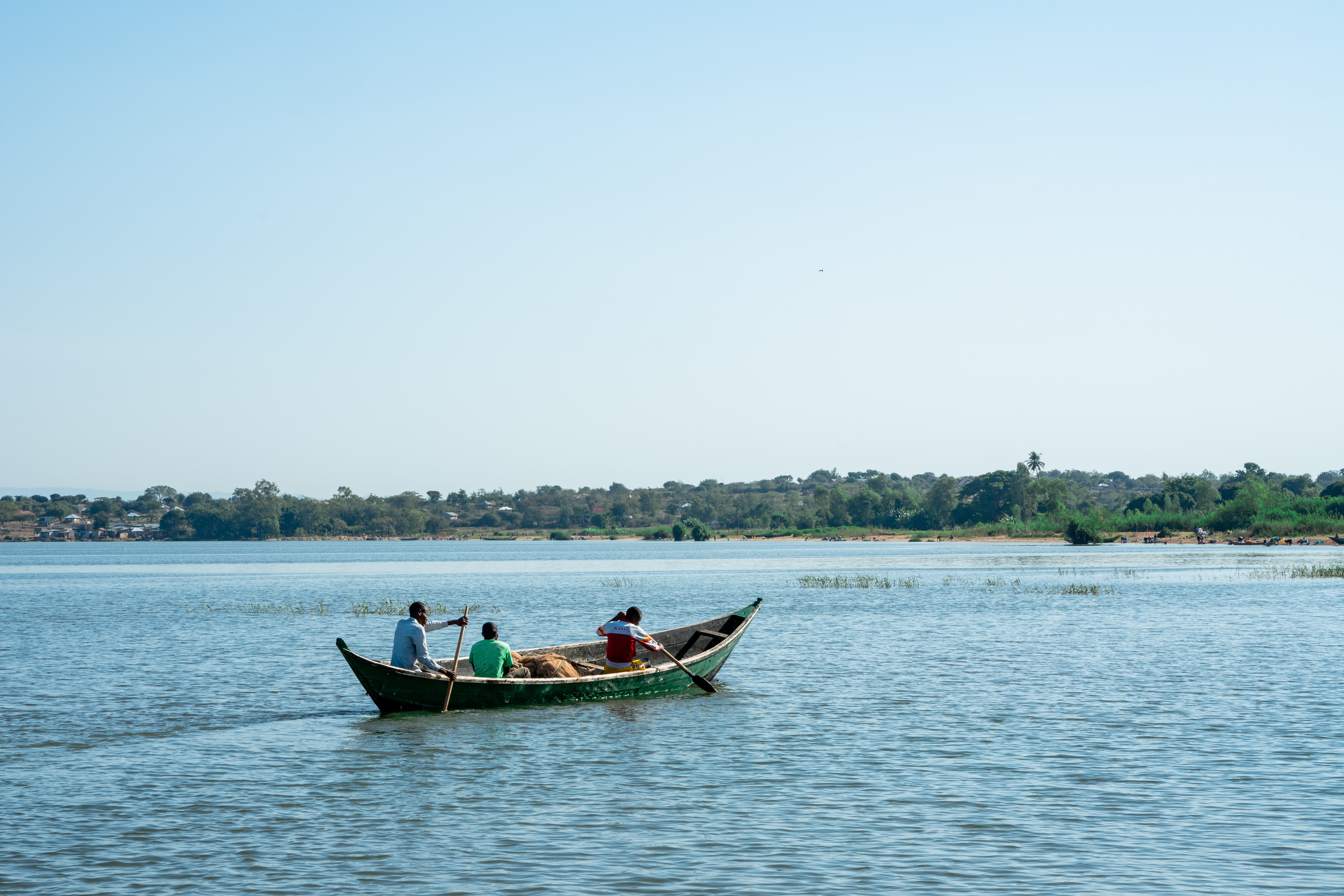Sustainable fish farming? Prove it

Is aquaculture sustainable?
- The world is facing depleting fish stocks and fish farming – or aquaculture – offers solutions and could help ensure food security.
- But aquaculture has been called out for challenging natural biodiversity.
- Applying technology such as AI, machine learning, satellite data and geospatial datasets can make fish farming sustainable while providing the evidence to prove it.
I was born on Inis Oírr (pronounced Inisheer), an island 25 minutes by boat off the west coast of the Republic of Ireland. It’s home to around 250 permanent residents, surrounded on all sides by the Atlantic Ocean; it’s therefore little wonder that my home has a long heritage of sea fishing, and I find myself researching the future of the fishing industry.
Until the latter years of the twentieth century, small, often family-run operators from the island thrived, selling cod, mackerel and other fish to satisfy a rapidly growing market in Ireland and beyond. But the waters surrounding Inis Oírr have met the same fate as seas the world over: depleting fish stocks.
A time of tumbling fish stocks
According to the UN’s Food and Agricultural Organisation (FAO), the percentage of fish stocks that are within biologically sustainable levels decreased from 90% in 1974 to 65.8% in 2017. For my island’s fishing families the profitability was not there anymore – tourism has taken as over the main economic activity.
I left Inis Oírr to attend university before joining IBM Research Europe in Dublin in 2012. Today I combine my island’s heritage with my PhD on numerical modelling and ocean simulation to study aquaculture. Also known as fish farming, it’s currently experiencing phenomenal growth. Global production rose by 527% between 1990 and 2018, a level of development necessary to meet the sharp rise in fish consumption (+122% from 1990 to 2018) at a time of tumbling sea stocks.

Aquaculture: a compelling solution, but with a catch
According to the FAO, aquaculture has expanded fish availability to regions and countries with otherwise limited or no access to the cultured species, often at cheaper prices, leading to improved nutrition and food security. In 2018, aquaculture provided 52% of the fish available for people to eat. With further growth in store, the spotlight is on aquaculture’s sustainability, which is at the core of the UN’s Sustainable Development Goal number 14: “Life Beneath the Water”.
Over the years, the industry has been called out on issues such as the build-up of fish waste that depletes the water of oxygen, contributing to harmful algal blooms; disrupting natural biodiversity due to fish escaping from cages; and environmental degradation due to a site’s location. And aquaculture has other challenges to overcome such as fish disease, lice outbreaks and the need to efficiently manage resources to maximize productivity.
Tech for economic and ecological good
IBM is increasingly working with the aquaculture sector on the use of technology, data and machine learning for both ecological and economic improvements. For example, Norway’s Seafood Innovation Cluster worked with us to build AquaCloud, a platform that gathers data from salmon farms and uses sophisticated machine learning techniques to help predict and prevent sea lice outbreaks.
Together with the Norwegian Seafood Association, IBM is deploying a blockchain traceability network to share supply chain data, improving transparency in the country’s substantial seafood industry.
My team and I are looking to take this further by collaborating with a broad group of industry and academic partners on an EU-funded project, Green Aquaculture Intensification in Europe (GAIN), which is embedding sensors and machine learning technologies into fish farms across nine countries.
Evidence of sustainability
My experience with IBM, combined with my Inis Oírr heritage, has convinced me that companies aspiring to be truly successfully in aquaculture will need to be visibly sustainable. Data and AI are the most credible ways to share the evidence.
Data about fish movement, oxygen levels, water content and many other factors is available from a variety of sources including environmental sensors, underwater video monitoring, hydroacoustic technology and drone imagery. Together with satellite data and other geospatial datasets, the information is sent to a cloud platform where machine learning produces useful recommendations, correlations and early warnings of potential risks.
A more accurate, faster picture
Most of the fish farmers I meet still rely on intuition and experience. These are valuable perspectives but with limitations: aquaculture is practiced in a complex and chaotic environment subject to the vagaries of oceans and weather, so applying AI to the data can give a broader, more accurate and faster picture. The combination of sensors and AI also turns the data into actionable insight on aspects such as fish welfare and feeding.
The European Commission’s Horizon Europe research programme names aquaculture along with digital technologies as two of its target areas for €10 billion of funding. It’s therefore little wonder that we’re witnessing changes to the industry. These include moving fish farms into deeper waters – less accessible locations that will require technology to manage. Also, as aquaculture becomes more competitive, it’s not just about practicing sustainability, it’s about being able to prove it.
Don't miss any update on this topic
Create a free account and access your personalized content collection with our latest publications and analyses.
License and Republishing
World Economic Forum articles may be republished in accordance with the Creative Commons Attribution-NonCommercial-NoDerivatives 4.0 International Public License, and in accordance with our Terms of Use.
The views expressed in this article are those of the author alone and not the World Economic Forum.
Stay up to date:
UpLink
Related topics:
Forum Stories newsletter
Bringing you weekly curated insights and analysis on the global issues that matter.
More on Food, Water and Clean AirSee all
Wesley Spindler, Laura Fisher and Luna Atamian Hahn-Petersen
November 18, 2025







